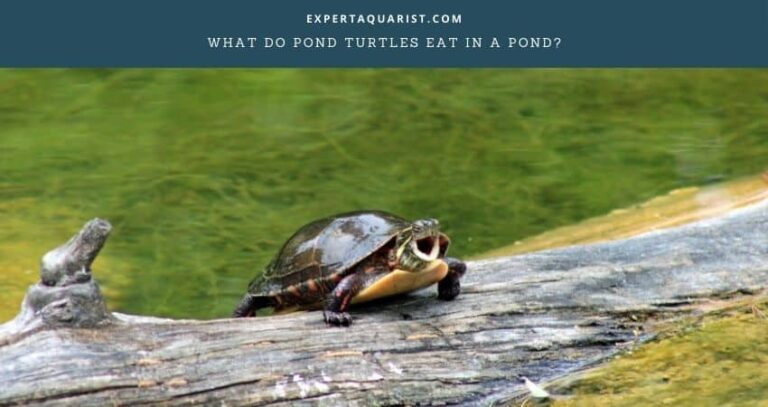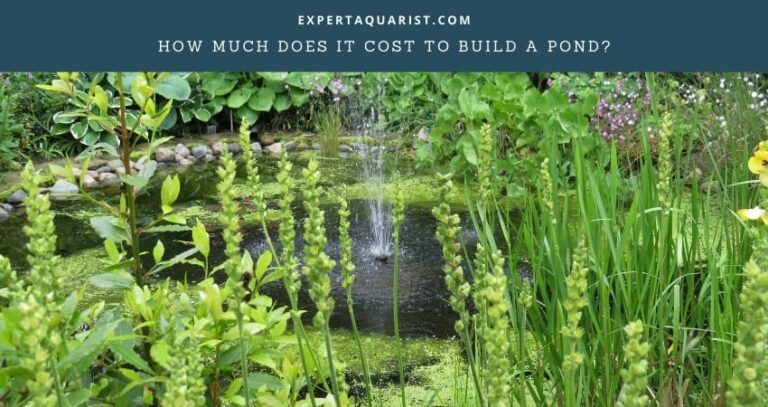Many people enjoy the look of a pond full of minnows. They are usually harmless and help with the ecosystem. They also help to control algae by eating them.
A proper home for these little guys should be a pond with lots of oxygen and a filtration system to filter out impurities. The best way to keep your minnows happy and healthy is by giving them plenty of space for swimming, hiding places, and plants for them to eat on top of the water surface.
Let’s take a look at how to keep minnows at a garden pond in detail to give you a better insight into this, I’m sure it’ll help you somewhere along the line.
How to take care of your minnows In A Garden Pond
Minnows really don’t need much of your time and attention. They are pretty self-dependent and can survive on a wide variety of environmental conditions. But minor adjustments can really make their lives easier.

After releasing the minnows in the pond, you can do the following to take care of them:
- Food
As minnows can feed themselves on algae, small plants, or insects, you don’t have to feed them that often. If you do intend to feed them, you can feed them any kind of fish food you want once a week. Giving them basic fish food would do, you can get some in local stores.
- Oxygen
While pond plants are sufficient, having an extra source of oxygen definitely helps minnows. Some people add aeration pumps, but I prefer waterfalls, they’re natural, raise the aesthetic value, and oxygenate the pond. Minnows will love it, and it’s cost-effective too.
- pH levels
Make sure to check the pH levels of the water in your pond. Minnows usually prefer waters with pH levels of 7.0-7.5. If the water is too acidic or alkaline, it will die off quickly.
- Temperature
You have to keep in mind that most minnows don’t survive in extreme heat or cold. Make sure your water temperature is always maintained between 50-70 degrees Fahrenheit.
To make sure the water doesn’t overheat during summer, either build a shade around the pond or have some aquatic plants like water lilies that float on the water. The fish then can take refuge under the leaves of the plants if the water gets too hot.
As for the extreme cold, you can use a pond heater or deicer to keep the pond warm.
- Plants
Adding floating plants like lilies would help keep the temperature of the water remain cool and provide ample shading for the minnows. You can also add underwater plants like horsetail or creeping jenny which can produce oxygen and also provide shelter for the fish.
- Predators
After preparing the surroundings for the minnows. Next, you have to look at the fish that you’ll be putting with them. This might sound odd to hear, but you need to put predators with your minnow.
Surprised? You’ll understand after you see how fast minnows lay eggs in a pond. They have one of the fastest reproduction rates out of all pond fishes and can lay up to 1000 eggs in a month.
If you don’t have the means to limit the population, they will overcrowd your pond and make the environment unhealthy. In such situations, adding predatory fishes like bass or catfish in your pond is a good solution. Bluegill will also do the trick.
But be aware! If there are too many of them swimming around, minnows can’t survive as they will be eaten faster than they can repopulate.
Just like Thanos, you gotta strike a balance.
While predatory fishes are okay, other animals or birds are not. It’s because aggressive fishes are a calculated risk as we can always take them out to maintain the balance of the pond. However, fish hunting birds or wild animals are not in our plans.
Herons are usually the main threat to minnows. Put reflective pieces of plastic on the shed or plant in the water to fend off such birds. You can also add hiding shelters made of rock so that animals like weasels or foxes can’t steal fish.
As minnows are tiny, once they get under a rock, it’s hard to bring them out.
Additional Read: How To Protect Pond Fish From Predators
Advantages of keeping minnows in your garden pond
- They can keep your pond clean by eating algae, weeds, insects, and mosquito larvae.
- They can act as food for predatory fish like bass and catfish, which helps them to grow faster.
- They can be used in aquaponics ponds by using their wastes to grow plants underwater.
- They can also be used as baitfish. So while fishing, you can use excess minnows to fish for other fish.
Disadvantages of keeping minnows in your garden pond
- As minnows eat plants, keeping them in an aquaponics pond is a double-edged sword. Yes, they will help fertilize your plants, but they will eat the plants as well.
- Do not release minnows in ponds used for baby fishes as they will eat them.
- As they are fish equivalent of rabbits, if unchecked, there will be at least 1000 minnows in your pond within a month. Such a huge population will also bring the extra baggage of huge amounts of wastes which will make your pond water murky, toxic, and unhealthy.
Types of Minnows

There are at least 20 different species of minnows. Let’s take a look at some common species that are usually placed in ponds.
- Fathead Minnows: These are probably the most common species of minnows. They are a slow-moving species that eat anything they can fit in their mouth. They can also inhabit places where other fishes don’t or can’t live. If you have predatory fishes in your pond who you want to feed other live fish, they can be a very good choice.
- Rosy Red Minnow: They are a variant of the fathead minnows with a different color scheme. They can be red, orange, or pink in color. They have the ability to survive in colder temperatures than most other minnows although they need at least 50-70° F temperature water.
- Common Minnow: They are a fast-moving species of minnow who prefer to stay in schools. As they move fast, they are not suitable species for smaller ponds.
- White cloud mountain Minnow: If you have ponds made for frogs, they are an excellent choice to have in them. They are one of the smallest species of minnows. They can survive in temperatures as low as 41°F, so if you live in a relatively cold place, they should be your go-to species.
- Mosquito Minnow: These minnows specialize in eating mosquito larvae, hence the name. Although they are of average length, i.e 4 inches, adult fishes can eat at least 100 mosquitos in a day making them an excellent choice to clean up your pond of mosquitos.
- Creek Chub : They are one of the largest minnows, ranging from 5-7 inches in length. They are fast-moving fish that are able to survive at any temperature between 35-89 degrees Fahrenheit. So if you live in a place where temperature varies greatly in different seasons, you should keep them in your pond.
Tips to keep minnows in a garden pond
Now that we have a general idea of how to keep minnows in a garden pond. There are a few extra things you should do while releasing them into your pond.
- If you aren’t planning on having too many minnows, you can use traps too instead of predators. You can use the excess minnows as fish bait. They’re also great to feed your cat.
- If there are koi or goldfish in your pond, it’s better not to release minnows in them as they will overpopulate the pond in a matter of weeks.
- Minnows are bad for a fish-keeping pond, they can eat eggs of other fish or even baby fish. So don’t put them in if you’re raising other fish babies.
- Avoid tap water, it can kill minnows.
- Minnows remain healthy in cooler water.
Last Words
As a pond owner, it is important to take care of minnows in your pond. Despite some minor drawbacks, they still are an excellent choice of fish to have in your backyard garden. Since you now know how to keep minnows in a garden pond, you can easily release and raise minnows without much of a fuss.






